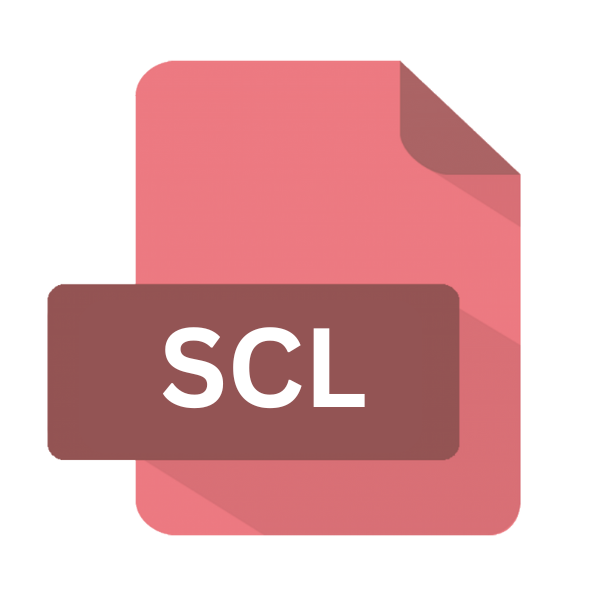.SCL File Extension

Sibelius Chord Diagram Library
| Developer | Avid |
| Popularity | |
| Category | Data Files |
| Format | .SCL |
| Cross Platform | Update Soon |
What is an SCL file?
In the realm of music composition and notation, efficiency and precision are paramount. Composers and arrangers often seek tools that streamline their workflow while maintaining the integrity of their musical vision.
One such tool is the Sibelius software suite, renowned for its comprehensive set of features tailored for musicians and composers.
At the heart of Sibelius lies a unique file format known as the .SCL file extension, which stands for Sibelius Chord Diagram Library.
More Information.
The inception of the .SCL file extension aligns with the development of Sibelius software. Initially conceived as a tool to digitize traditional music notation processes, Sibelius aimed to revolutionize the way musicians notate their compositions.
The introduction of the .SCL file format further enhanced Sibelius’s capabilities by offering a standardized method for storing chord diagrams.
Chord diagrams are essential components in music notation, providing visual representations of chords played on various instruments such as guitars, ukuleles, and keyboards.
The .SCL file extension was designed to store these chord diagrams efficiently, enabling composers to access and incorporate them seamlessly into their scores.
Origin Of This File.
The .SCL file extension is a product of Avid Technology, Inc., a company specializing in audio and video production technology.
Avid introduced Sibelius, a scorewriter program, in 1993. Since then, it has evolved into one of the most popular notation software solutions in the music industry, utilized by composers, arrangers, educators, and performers worldwide.
File Structure Technical Specification.
The .SCL file extension follows a structured format optimized for storing chord diagrams. While specific technical details may vary based on the version of Sibelius software.
A typical .SCL file contains metadata describing the chord diagrams’ attributes, including chord names, fingerings, and graphical representations.
.SCL files may utilize XML (Extensible Markup Language) or proprietary binary formats to encode chord diagram data.
XML-based .SCL files offer human-readable and easily parseable representations, facilitating interoperability with other software applications and platforms.
How to Convert the File?
Converting .SCL files to other formats may be necessary to overcome compatibility issues or utilize chord diagrams in different software environments. While direct conversion options for .SCL files are limited due to their proprietary nature, alternative approaches exist:
- Export to MIDI: Sibelius allows users to export chord diagrams as MIDI (Musical Instrument Digital Interface) files, which can then be imported into other music notation software or digital audio workstations (DAWs).
- Screenshot and Image Conversion: Users can capture screenshots of chord diagrams within Sibelius and convert them into image formats such as JPEG or PNG using image editing software.
- Manual Recreation: In cases where conversion options are limited, users may opt to manually recreate chord diagrams in alternative notation software.
Advantages And Disadvantages.
Advantage:
- Efficiency: .SCL files streamline the process of incorporating chord diagrams into musical scores, saving time and effort for composers and arrangers.
- Consistency: By standardizing the storage of chord diagrams, .SCL files ensure consistent formatting and presentation across different compositions and projects.
- Integration: Sibelius seamlessly integrates .SCL files into its workflow, allowing users to access and manipulate chord diagrams alongside other musical elements.
Disadvantage:
- Dependency on Sibelius: .SCL files are primarily compatible with Sibelius software, limiting their usability outside of the Sibelius ecosystem.
- Proprietary Format: The proprietary nature of .SCL files may hinder interoperability with other music notation software solutions.
- Version Compatibility: Users may encounter compatibility issues when attempting to open .SCL files created with different versions of Sibelius.
How to Open SCL?
Open In Windows
- Double-click: Simply double-click on the .SCL file, and it should automatically open in Sibelius if it’s the default program for handling such files.
- Open from Sibelius: Alternatively, launch Sibelius, go to the “File” menu, and choose “Open.” Then navigate to the location of the .SCL file and select it to open.
Open In Linux
- Wine: Install Wine, a compatibility layer that allows running Windows applications on Linux. Then, install Sibelius through Wine and follow the same steps as opening on Windows.
- Alternative Software: Explore Linux-compatible music notation software that supports importing MIDI files. You can convert .SCL files to MIDI format in Sibelius and then open them in the alternative software.
Open In MAC
- Launch Sibelius: If Sibelius is your default application for .SCL files, double-clicking the file will open it in Sibelius.
- File Menu: Alternatively, open Sibelius and use the “File” menu to navigate to and open the .SCL file.
Open In Android
Remote Desktop: Install a remote desktop application on your Android device and connect to a desktop or laptop computer running Sibelius. You can then open and work with .SCL files remotely as you would on the desktop. Alternatively, consider converting .SCL files to MIDI format and using compatible music notation apps on Android.
Open In IOS
Remote Desktop: Install a remote desktop application on your iOS device and connect to a desktop or laptop computer running Sibelius. You can then open and work with .SCL files remotely as you would on the desktop.
Open in Others
- Cross-platform Software: Look for web-based music notation software that supports opening .SCL files directly or via MIDI import/export functionality.
- MIDI Editors: Explore multi-platform MIDI editors that offer compatibility with .SCL files converted to MIDI format. You can then manipulate chord diagrams within these editors.













